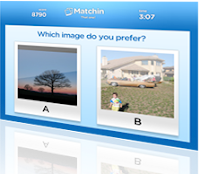Intro
I’ve been looking into photo websites so I can stick my photos up for the world to see. I decided the easiest way to pick was to try several out at once to see which ones I like.
I’ve been using Webshots for some years but not quite happy with it, so I decided to test these three Photo Websites (in alphabetical order):
- DropShots
- Flickr
- PhotoBucket
To compare each I signed up for a free account, and therefore the information here is based on the free account. You can see each of my accounts here:
My Favourite
In the end I felt Flickr was the one for me. I’ve detailed why below.
Flick is one of the most popular photo websites and is populated by people who really take photos seriously. The free account gives you a good feel for all the functionality the payfor account does, unfortunately the free account restricts the amount of data you can upload per month to just 100 Mb – a visit to the local zoo would soon use this up – so this makes the free account mostly unusable, photobucket has the best free account, if you don’t mind the speed and all the ads.
Flickr does have some nice features though. You can tag your photos with words but or by position on the Yahoo world map (called “Geo tagging”) and all with a rather nice and simple drag and drop interface making it easy to organiseyour photos (none of the other websites are this easy). You can also divide you photos in to numerous sets (which are like folders) and the same photos can be placed in more than one set – for example: Your zoo outing could be one set with the inevitable animal shots also being dropped into your “Wildlife” set too – (You only get a total of three sets in the free account). There’s also collections, which Flickr says are like “Sets of sets but better than that” but these aren’t available in the free account. Basically, it allows you to collect together groups of related sets, and groups of other collections. (This again is unique on Flickr, the other websites only have single sets.)
The web upload is pretty basic with a few text boxes which is a shame as you could feasibly use this a lot if you upload on holiday. (PhotoBucket excels here, with easily the best online uploader – although it technically it downloads and runs a program inside your browser) The installed version Flickr’s upload program is quick and simple to use, very similar to all the other websites.
One thing that Flickr excels in is its great API – this, together with its many uses, means that many applications, both online and off, have been created to use your photos – check out places like FaceBook or download a screensaver for your computer. It also means you can write you own unique photo app and from experience they have made it very straight forward.
One negative is it’s lack of video, this goes against all the other websites. I think this is mostly due to them trying to concentrate on the Photos and not wanting to become another YouTube, it would be good to store my holiday videos right next to my holiday photos. (Note however, that Flickr has said it will soon be doing this… I’ll update when know)
Summary
Here’s a quick list of the good and bad points for each.
DropShots
Good: Simple unique timeline interface, quick, ad free, video, drag drop interface.
Bad: Basic features, single sets, free account limited, no api.
Recommend: For beginners or people not to confident with photo websites.
Flickr
Good: Multiple sets, Installed upload, geo tagging, api, drag drop interface
Bad: No video, online upload, free account useless.
Recommend: For people series about photos, people who what to do a lot with their photos, programmers and people with a fascination with categorising everything.
PhotoBucket
Good: Free account unlimited photos, video, geo tagging, online upload excellent
Bad Slow, Full of ads, single sets, no api.
Recommend: For people who don’t want to pay anything and just want to show them off but have a ton of photos.
Webshots
Good: Free account useful, video, upload useful. Good screensaver/desktop changer
Bad: A few adverts, single sets, no open api.
Recommend: For people who want a free account but don’t like tons of adverts. Also has a very nice screensaver program.
Let me know…
… which ones you like, hate, recommend and stay clear off.






